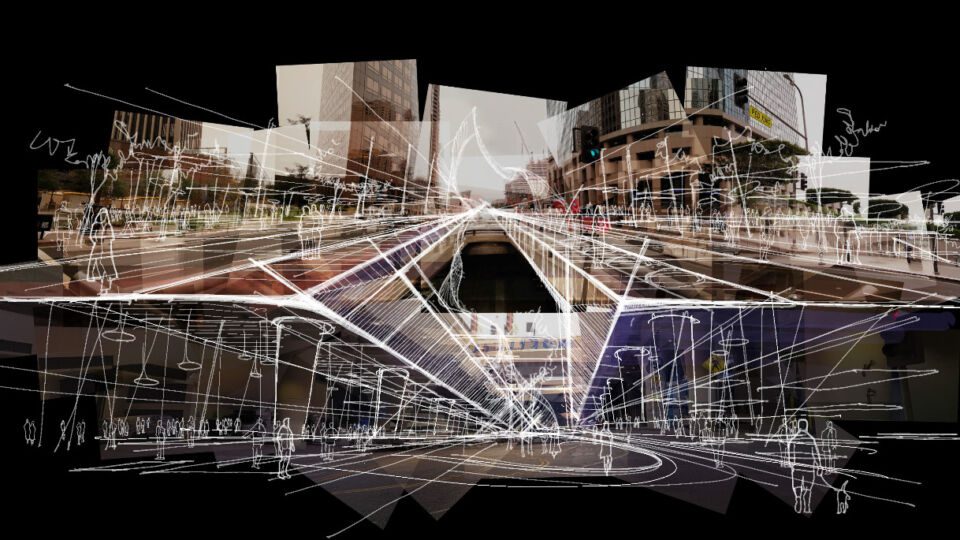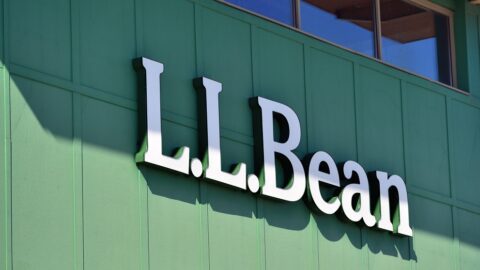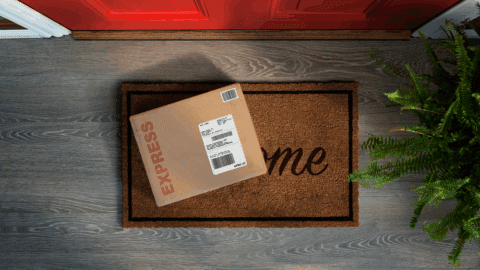The pandemic has prompted a rethinking of our cities and how we go about our lives. What does the urban shift mean for the future of retail? More specifically, how does the on-demand economy change the retailer’s business model? And, what are the last-mile delivery challenges retailers face?
Urban Shift: People and Community
Our world has become increasingly urbanized. Today, most people live in cities. Health organizations, urban planners, and economists predict ongoing urbanization in the future (World Health Organization, 2010). The pandemic, lockdown, and economic downturn have prompted a rethinking of our cities and how we go about our lives. While we are taking care of our health, working from home, and shopping online, we are prioritizing people and the community.
For the last 100 years, we have regulated land use to separate where we live from where we work and where we manufacture, store, and move goods. We shaped our cities to accommodate cars. The disruption caused by COVID-19 has led to a re-appreciation of relatively compact, walkable neighborhoods, with a mix of uses and opportunities to interact with people outdoors. One of the most prominent advocates of an urban shift towards so-called “15-minute cities” has been the Mayor of Paris, Anne Hildago. (Bloomberg, 2020). She envisions a city made up of neighborhoods that give people the opportunities they need to thrive with access to transit and parks, fresh foods and healthcare, and proximity of places to live, work, shop, and relax. Although her ideas are not new and have long been promoted by planners and urban designers, the pandemic has built new momentum around the shift towards mixing uses within buildings and at a district level, creating walkable and sustainable communities and making places for people.
Another example of the urban shift is the push to reclaim the streets for people. In New York City, for example, streets make up 27% of the land. Less than 25% of the streetscape is reserved for pedestrians and cyclists. The rest is used to move and park cars. Transportation Alternatives, a New York-based non-profit advocating to make streets for people, has calculated that congested streets cost New Yorkers $1.7 billion in travel time and 87 million hours of lost time every year. Their NYC 25×25 campaign urges city leaders to give 25% of the streetscape back to people. Traffic congestion and inadequate infrastructure have become a detriment to economic opportunity and the future of our cities.
At a human level, the urban shift signifies behavioral change. People were already shopping online and ordering food for delivery, but it has become evident that consumer preferences have changed permanently. The retail sector is at a pivotal moment in adapting to the changed market conditions and consumer preferences. A year ago, people wanted experience; now, they crave community. However, they still want easy access and convenience. While the digital retail experience and technological innovation of customer service are evolving at warp speed, changing the urban environment and physical space is much harder to do. Giving streets back to people, redesigning public space, and upgrading infrastructure will take time, resources and a shared vision. Implementation will need to be coordinated with stakeholders, retail and commercial tenants, property owners, public agencies and other community stakeholders.
Retail in the 15-Minute City
While suburban shopping malls and department stores have fallen victim to COVID, some smaller retail brands and local stores in walkable neighborhoods with a mix of uses, where people live, work, shop and relax, have thrived (LA Times, 2020). This seems to confirm the underlying assumptions of the 15-minute city concept. We want retail that is authentic, hyper-local, and we want hyper-proximity.
Throughout 2020, major cities in the U.S. have shown us how this can work (Wired, 2021). To give people more space and ensure the survival of small businesses, streets have been closed to traffic, and restaurants and stores have been granted sidewalk space for outdoor seating and display of goods. Additionally, people have taken over space on their own. Parking lots have been transformed into open-air restaurants. Gym classes and impromptu music performances have become a common sight in parks and plazas. Now that we have rediscovered the space we had lost to cars and are enjoying the newfound activity and energy, we are unlikely to give it up.
The jury is still out on the winners and losers in retail, and small businesses and mom-and-pop stores have suffered. Still, there is some evidence that walkable, mixed-use districts with a diverse offering of retail have been able to withstand COVID-19 better than mono-functional areas with less density and diversity (Forbes, 2020).
With cities in lockdown and people staying put, the volumes of traffic went down drastically. As a result, our streets, sidewalks, and public space have been able to meet the competing demands for travel lanes, parking space, and curbside delivery. As kids return to school, adults go back to the office and the gym, and our cities fully reopened, we will still want the convenience of the delivery of food and goods to our homes. We also want to keep our open streets and outdoor seating and continue to ride our bikes and exercise outdoors. It does not take a traffic engineer or urban planner to predict a clash of competing demands for physical space. If the lobbies of apartment buildings are any indication, things can spin out of control pretty quickly without proper management, protocols, and sufficient storage space. Likewise, retailers find themselves confronting a host of logistical issues, which can cause mounting operational stress.
Retail Neighborhood Hubs
One way to take the burden off the individual retailers may be to share resources and infrastructure. Retailers may believe that keeping outsiders out will protect their brand and identity, but the food and beverage industry has shown that sharing resources and infrastructure works. In response to the increased demand for delivery of restaurant meals, ‘ghost kitchens’ have popped up in cities across the U.S. (Kickfin, 2020). The basic concept is that delivery-only restaurants share a facility for preparing and cooking meals. Though physically in the same space, the virtual restaurants maintain their individual brands and keep their own menus. The cost of preparing and cooking meals is significantly lower because, in addition to the physical space, staff, equipment, and amenities can be shared. The space itself does not need to be prime real estate with street frontage in high foot-trafficked areas, including serving room and outdoor seating.
Ghost kitchens allow restaurants to cater to customers in neighborhoods they would otherwise not be able to reach. Another example of a successful business model based on shared resources and infrastructure is REEF Technology. This owner and operator of parking garages is transforming parking space into neighborhood hubs that make up a network of ecommerce and last-mile delivery facilities, including ghost kitchens. Retail innovators have begun testing new business models that fully embrace the 15-minute concept.
A New York-based start-up advertises “groceries delivered in 15 minutes”. The service is marketed locally, and, other than a QR code to download an app, there is no further information available. The physical location in Williamsburg, Brooklyn, is located on the ground floor of a former industrial plant that has been converted into luxury apartments and sits in between a hair removal salon and an independent bookstore. Groceries are delivered within a one-mile radius of the facility using electric scooters.
Retail and Last-Mile Delivery
Retailers are already redesigning brick-and-mortar locations to accommodate product distribution. For instance, by converting retail stores into micro-fulfillment spaces and offering curbside pick-up and return services (CBS Insights, 2020). Additionally, many large stores are looking to distribute essential customer services across a small network of physical locations. With small-format stores dedicated to fulfillment, higher-profile stores can act as showrooms or experiential locations. Lastly, converting existing anchor spaces into fulfillment warehouses and operational hubs will help improve last-mile delivery speed. Large, empty anchor spaces can be transformed into places to fulfill orders and meet growing sales demand. Stores are becoming mini-warehouses where we can pick things up or from where we can have them delivered to us, as an alternative to big-box stores in the periphery of urban centers that can only be reached by car.
Last-mile delivery and unmanned experiences like Amazon Lockers elevate the premium convenience and safety of spaces but do not provide us with a way to connect with people. By fulfilling one situational need, we removed another one — human connection. To combat this isolation, we may be seeing more single environments having last-mile distribution as one component of an ecosystem of retail that is inventing itself.
In response to online shopping and the increased demand for store pick-up and home delivery of goods, retailers in urban environments are faced with operational challenges like storage, distribution, traffic congestion, and curbside management issues. How can the basic concept of sharing resources and infrastructure be applied to the retail industry? Will it reduce cost, improve operations, and better serve the needs of customers? Will it foster new partnerships? The concept of virtual stores and online shopping is well-established, but the issues that arise in the last mile of delivery are not something the retail industry can fix on its own.
Renée Schoonbeek is Senior Associate Vice President at CallisonRTKL. Renée is a visionary urban planner with a wealth of experience in both public and private sectors in master planning, economic and community development. Renée leads the CallisonRTKL Planning and Urban Design Studio in New York and is uniquely qualified in community-based planning, urban placemaking, and building public private partnerships while delivering large complex projects and engaging stakeholders.








